Maximizing The Benefits Of A Water Flosser
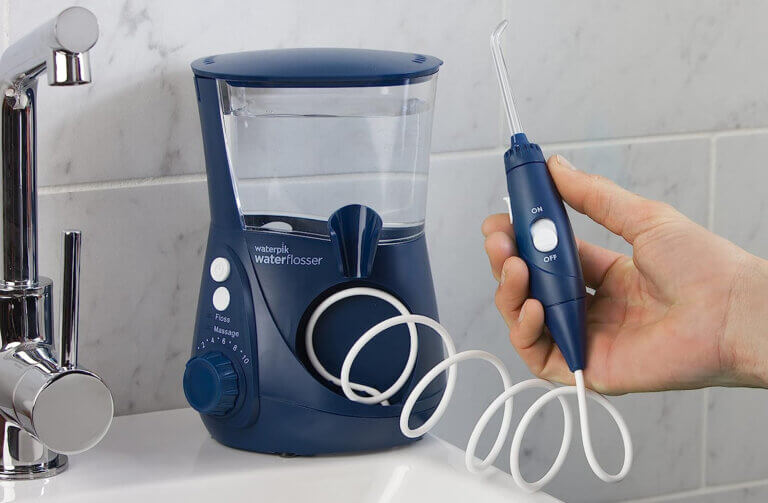
Water flossers, also known as oral irrigators, are a popular tool for maintaining good dental hygiene. They use a stream of water to effectively remove plaque and food particles from between the teeth and along the gumline that can cause gum disease and cavities. Many people find that using a water flosser is a more comfortable and efficient method of cleaning their teeth and gums compared to traditional flossing.
Before deciding on whether a Water Flosser is right for you, there are some things you should know:
- Choose The Right Water Flosser For Your Needs
- Preparing Your Water Flosser For Use
- How To Use A Water Flosser
- Tips For Effective Use Of Your Water Flosser
- Maintenance And Care Of Your Water Flosser
If you have any further questions about Water Flossers or other oral hygiene tips offered at Atlas Dental, please contact us.
Choose The Right Water Flosser For Your Needs
When it comes to choosing a water flosser, it’s important to consider your specific needs and preferences. Here are a few additional factors to consider:
- Brand: There are many different brands of water flossers on the market, each with their own unique features and benefits. Consider researching different brands to find one that meets your needs and has a good reputation. The most widely recognized brand is the Waterpik Water Flosser.
- Budget: Water flossers can vary widely in price, from under $60 to over $100. Determine how much you are willing to spend on a water flosser and look for options that fit your budget.
- Size: Water flossers come in different sizes, with some being more compact and portable than others. If you have limited storage space or plan to travel with your water flosser, you may want to opt for a smaller model.
- Nozzle options: Many water flossers come with a variety of nozzles, each designed for a specific purpose. For example, some nozzles are better for removing plaque from between the teeth, while others are better for massaging the gums. Consider the types of nozzles that are included with the water flosser and decide if they meet your needs.
- Battery or wall plug-in: Water flossers can be powered either by batteries or by plugging into an electrical outlet. Consider which option is most convenient for you and your lifestyle. For example, if you travel frequently, a battery-powered water flosser may be more practical. If you want reliability, opt for the wall plug-in unit.
- Reviews: Before making a purchase, it’s a good idea to read reviews from other users to get an idea of the performance and quality of the water flosser you are considering. Look for a water flosser that has received mostly positive reviews from users.
By considering these factors, you can choose a water flosser that is right for your needs, budget, and lifestyle. For more information about water flossers and other oral hygiene tips, contact us at Atlas Dental.
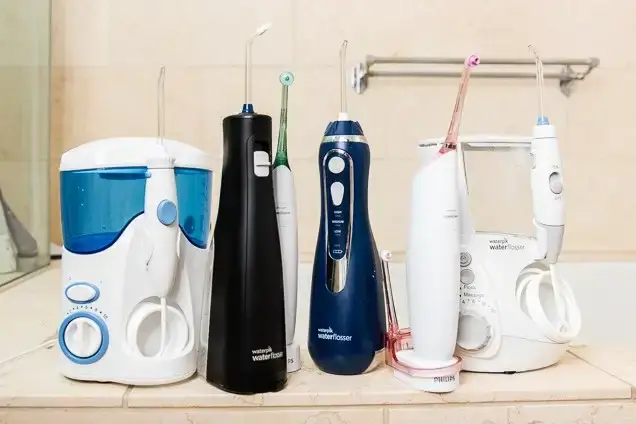
Preparing Your Water Flosser For Use
Before using your water flosser, it’s important to properly prepare the device and yourself. Here’s what you should do:
- Fill the water tank with lukewarm water: Cold water can be uncomfortable to use, while hot water can be damaging to the device. Fill the water tank with lukewarm water to get the most optimal results.
- Add any desired mouthwash or other solution to the water: Some people like to add mouthwash in the water tank for an additional chemical disinfection effect to your teeth and gums. Consult the manufacturer’s instructions or your dental professional to determine the appropriate amount and type of solution to use.
- Select the appropriate nozzle for your needs: Many water flossers come with a variety of nozzles, each designed for a specific purpose. Choose the nozzle that best meets your needs and attach it to the water flosser.
By properly preparing your water flosser and yourself, you can ensure that you get the most out of your water flossing routine.For more information about water flossers and other oral hygiene tips, contact us at Atlas Dental.
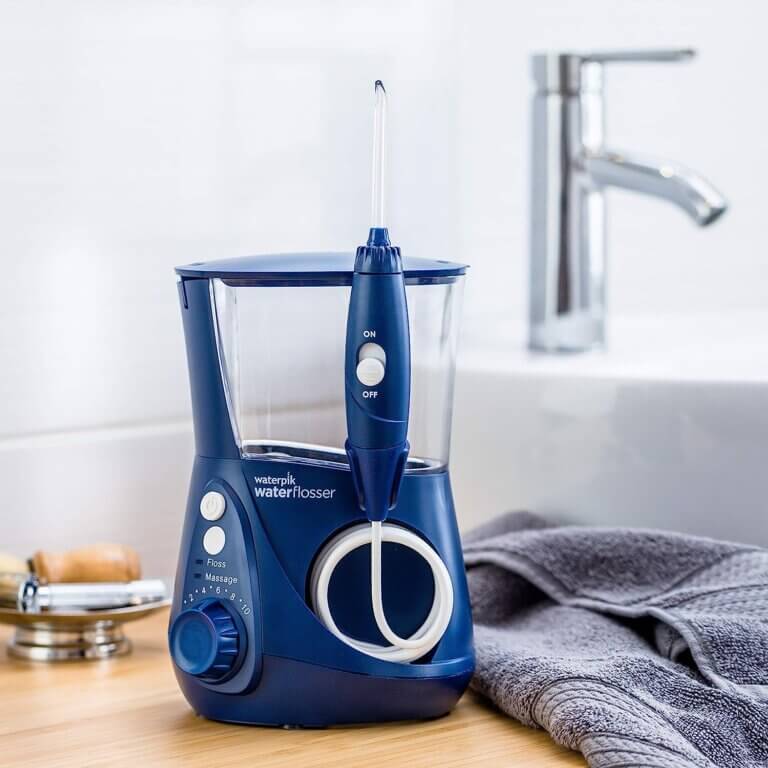
How To Use A Water Flosser
Using a water flosser is relatively simple, and with a little practice, you’ll be able to effectively clean your teeth and gums in no time. Here’s a step-by-step guide on how to use a water flosser:
- Stand in front of a mirror and position the device in your hand: This will allow you to see what you are doing and ensure that the water flosser is correctly positioned in your hand.
- Aim the nozzle towards your teeth and gums: Hold the water flosser with the nozzle pointed towards your teeth and gums.
- Turn on the device and begin flossing in a back and forth motion: Slowly move the water flosser back and forth between your teeth, aiming the stream of water at the gumline and between your teeth. Be sure to use a gentle touch and avoid pointing the stream of water directly at your gums, as this can be painful.
- Be sure to floss all areas of the mouth, including hard-to-reach areas: Don’t forget to floss the back of your teeth and the areas around your molars. Use a circular motion to clean around each tooth, taking your time to ensure that all areas are thoroughly cleaned.
By following these steps, you can effectively use your water flosser to clean your teeth and gums. Remember to be gentle and take your time to ensure that you are thoroughly cleaning all areas of your mouth.For more information about water flossers and other oral hygiene tips, contact us at Atlas Dental.
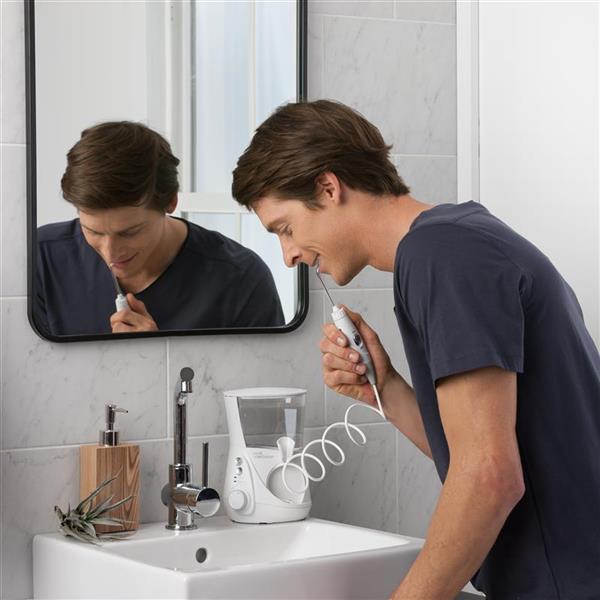
Tips For Effective Use Of Your Water Flosser
To get the most out of your water flosser and ensure that you are effectively cleaning your teeth and gums, here are a few tips to keep in mind:
- Start with a lower pressure setting and gradually increase as needed: Some water flossers have adjustable pressure settings, allowing you to control the strength of the water stream. If you are new to using a water flosser, start with a lower pressure setting and gradually increase as needed. If you are new to water flossing, do not be surprised if your gums feel uncomfortable and there is some bleeding. With time and practice, your gums will become firmer, healthier, and bleed less.
- Don’t forget to floss the back of your teeth: It’s easy to focus on the front of your teeth when using a water flosser, but it’s important to remember to floss the back of your teeth as well. Use a back and forth motion to clean the behind your last set of molars and along the gumline.
- Take your time and be thorough: Don’t rush through your water flossing routine. Take your time to ensure that you are thoroughly cleaning all areas of your mouth, including hard-to-reach areas.
- Consider using a timer: Many dental professionals recommend flossing for at least two minutes. To ensure that you are flossing for the recommended amount of time, consider using a timer. This can help you develop a consistent flossing routine and ensure that you are giving your teeth and gums the attention they need.
- The water flosser is not a substitute for routine brushing and flossing: Some patients like the speed and convenience of a water flosser, so much so that they neglect regular brushing and flossing. Be sure to brush your teeth twice a day with a fluoride toothpaste and floss daily to remove plaque and food particles from all surfaces of your teeth.
By following these tips, you can effectively use your water flosser to clean your teeth and gums and improve your dental hygiene.For more information about water flossers and other oral hygiene tips, contact us at Atlas Dental.
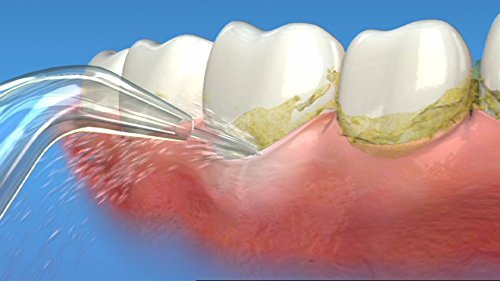
Maintenance And Care Of Your Water Flosser
Proper maintenance and care of your water flosser is important to ensure that it continues to perform at its best and has a long lifespan. Here are a few steps you can take to care for your water flosser:
- Empty and refill the water tank after each use: After each use, be sure to empty and refill the water tank with fresh, lukewarm water. This will help prevent bacteria from growing inside the tank.
- Rinse the nozzle thoroughly and allow it to dry: After each use, rinse the nozzle thoroughly under running water to remove any leftover plaque or food particles. Allow the nozzle to air dry before storing it away.
- Follow the manufacturer’s instructions for cleaning and maintaining the device: Each water flosser is different, so be sure to follow the manufacturer’s instructions for cleaning and maintaining your specific model. This may include cleaning the water tank, replacing the nozzle, or performing other maintenance tasks.
By following these steps, you can help ensure that your water flosser stays clean and in good working order. Proper maintenance and care of your water flosser can help extend its lifespan and ensure that it continues to effectively clean your teeth and gums.For more information about water flossers and other oral hygiene tips, contact us at Atlas Dental.
We also think you’ll like…
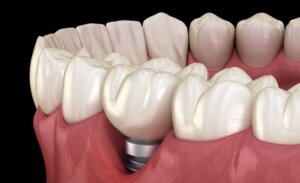
Peri-Implantitis
What Is Peri-Implantitis? What Is Peri-Implantitis? Dental implants have become a popular and effective solution for replacing missing teeth. However, like any other dental treatment,
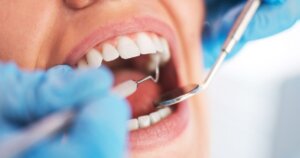
Teeth Cleaning Post-Visit Instructions
Teeth Cleaning Post-Visit Instructions What You Should Do After Your Teeth Cleaning Appointment To Ensure A Long Lasting, Bright And Healthy Smile. When was the
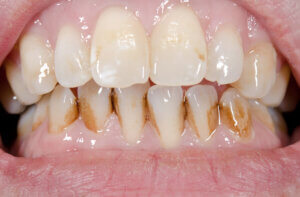
Teeth Staining
Teeth Staining What Is Teeth Staining? Teeth staining is a common dental condition that can affect anyone, regardless of age or oral hygiene habits. It
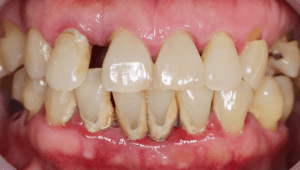
Dental Calculus
Dental Calculus What Is Dental Calculus? Dental calculus, also known as tartar, is a hard, yellowish or brownish mineral buildup that forms on teeth and

Dental Implant Failure
Dental Implant Failure What Is Dental Implant Failure? Dental implants are one of the most popular and effective solutions for replacing missing teeth. They are

Halitosis
Halitosis What Is Halitosis? Halitosis, commonly known as bad breath, is a condition where the breath has an unpleasant odor that can be embarrassing and

